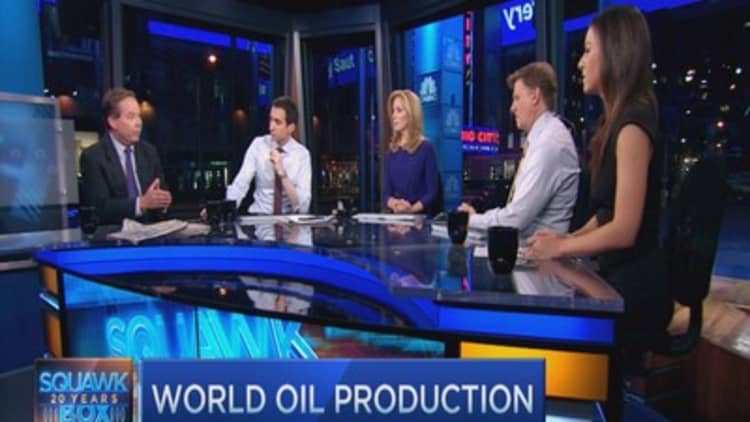
The Organization of Petroleum Exporting Countries (OPEC) has largely maintained its forecasts for oil demand growth and supply in its latest report, a precursor to its highly-anticipated meeting in December.
In OPEC's November report, the 12-country producer group kept its forecast for world oil demand growth in 2015, predicting it will rise by 1.5 million barrels per day (mb/d) to average 92.86 mb/d, unchanged from the previous month's forecast.
In 2016, world oil demand growth is seen reaching 1.25 mb/d, in line with the previous month's assessment, to average 94.14 mb/d.
The report is the last to come before OPEC's meeting in Vienna on December 4. There have been few signals that OPEC will decide then to deviate from its strategy of maintaining its production ceiling of 30 million barrels a day – a level it often exceeds -- despite the glut in global oil supply and lack of demand. Oil prices have fallen as a result from around $114 last June to below $50 a barrel.
Earlier this week, OPEC's secretary general signaled that the group, which is led by Saudi Arabia, believed oil prices would recover in 2016 and that was a reason to not cut its output.
"We are following the market day in day out, month in month out. We see that 2016 is really producing some positive results," Reuters cited Abdalla El Badri as saying at the Adipec oil and gas conference in Abu Dhabi Monday.
In its latest report, OPEC reiterated this optimism that prices could recover next year. "Strategic oil reserves have grown as some countries – including China and India – have taken advantage of lower prices to add to their reserves, a trend that is likely to continue. In addition, a colder or longer than expected winter, as well as better than projected economic activities, could support incremental demand."
"This would help alleviate the current overhang and support a recovery of crude oil prices in the coming months." It said.
It does not look like OPEC will play a part in this recovery by cutting output, however. The decision to maintain production is widely seen as a way for OPEC to maintain its 40 percent market share in the face of competition from U.S. shale oil producers, who it blames (as well as other non-OPEC producers) for the rise in supply.
Non-OPEC producers, such as those in the U.S. and Canada, have found it harder to withstand the sharp drop in oil price than their OPEC competitors who have cheaper production costs.
Strategy ‘bearing fruit’
The organization has said in previous reports that it sees non-OPEC supply falling due to shale oil production declining in the U.S. Acknowledging this in its current report, OPEC said that "the recent decline in oil prices has encouraged additional oil demand. It has also provided a challenging market environment for some higher-cost crude oil production, which has already shown a slowdown."
Many believe that OPEC is not planning on cutting output anytime soon, even though the group's strategy has already caused significant pain for its shale oil competitors. Commodities strategists at BNP Paribas were among others not forecasting any change in OPEC's position on December 4.
"So far, OPEC's current policy of prioritizing production over price is bearing fruit through company capex (capital expenditure) reductions and arresting growth in U.S. oil production," BNP strategists Gareth Lewis-Davies and Harry Tchilinguirian said in a note Thursday.
"While financial strains on OPEC countries caused by a low oil price are more regularly cited, there still is no indication of a change in policy on the horizon as a consequence…We do not expect any surprises from the next OPEC meeting, and OPEC's experiment in letting price bring adjustments to the world's oil balance has yet to run its full course."
They added that OPEC's stance "implied global stock builds only subside noticeably in the second half of 2016" signifying that oil prices could take a while longer to recover.
In November, OPEC kept its forecasts for non-OPEC supply unchanged from the previous month, estimating oil supply from non-members to average 57.24 mb/d in 2015. In October, OPEC's own production, according to secondary sources, dropped by 256,000 to average 31.38 mb/d -- still above OPEC's official limit.
Estimated demand for OPEC crude in 2015 remains at 29.6 mb/d, an increase of 600,000 barrels a day over the previous year. In 2016, demand for OPEC crude is forecast at 30.8 mb/d, around1.2 mb/d higher than in the current year and unchanged from the previous report.
- By CNBC's Holly Ellyatt, follow her on Twitter @HollyEllyatt.




